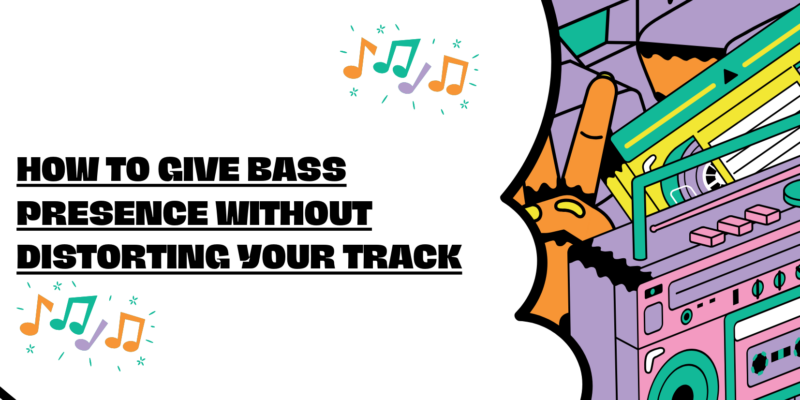Here are some tips on how to give your bass presence without distorting your track:
- Boost the fundamental frequencies. The fundamental frequencies of a bass guitar are typically in the 40-100 Hz range. These frequencies are responsible for the pitch of the note, and boosting them will ensure that the bass guitar is clearly audible in the mix.
- Cut the low-end frequencies. Bass guitars can produce a lot of low-end frequencies, which can make your mix sound muddy. Use a high-pass filter to cut any unwanted low-end frequencies. A good starting point is to set the high-pass filter at around 20 Hz.
- Boost the mid-range frequencies. The mid-range frequencies of a bass guitar are typically in the 100-500 Hz range. These frequencies are responsible for the body and warmth of the bass guitar sound. Boosting the mid-range frequencies can help to make the bass guitar sound more present in the mix without distorting it.
- Cut the high-end frequencies. Bass guitars don’t need a lot of high-end frequencies. In fact, too much high-end can make your bass guitar sound harsh and brittle. Use a low-pass filter to cut any unwanted high-end frequencies. A good starting point is to set the low-pass filter at around 10 kHz.
- Use a compressor. A compressor can help to tame the peaks in the bass guitar signal and make it sound more consistent and even. This can also help to make the bass guitar sound more present in the mix without distorting it.
- Use a limiter. A limiter can help to prevent the bass guitar from clipping, which can make it sound distorted. However, be careful not to overdo it, as too much limiting can make your bass guitar sound flat and lifeless.
- Use a saturation pedal. A saturation pedal can add a bit of grit and punch to your bass guitar sound. This can help to make it stand out in the mix without distorting it.
- Use a stereo bass effect. A stereo bass effect can spread the bass guitar signal across the stereo spectrum. This can help to make the bass guitar sound wider and more present in the mix.
Here are some additional tips:
- Use a spectrum analyzer. A spectrum analyzer can show you the frequency content of your mix. This can be helpful for identifying any areas where the bass guitar is too loud or too quiet.
- Compare your mix to other reference mixes. Listen to other mixes in your genre and compare the bass levels to your own mix. This can help you to get a better idea of what a good bass level is for your genre.
- Listen to your mix in different environments. Play your mix back in different environments, such as on headphones, in a car, and on a speaker system. This will help you to get a better idea of how the bass sounds in different contexts.
It is also important to note that the bass guitar is just one instrument in the mix. You need to consider how the bass guitar interacts with the other instruments in the mix. For example, if the bass guitar is clashing with the kick drum, you may need to adjust the EQ of one or both instruments.
By following these tips, you can get a great bass guitar sound in your mixes that is both present and distortion-free.


